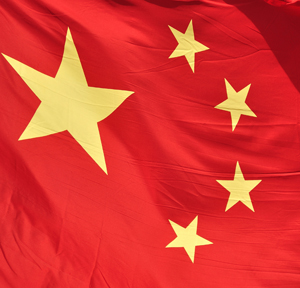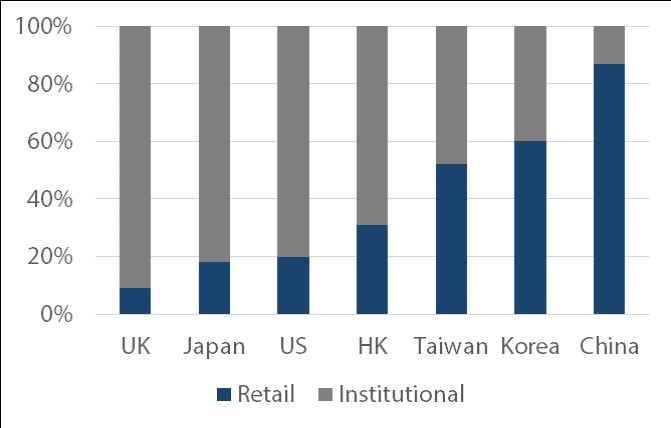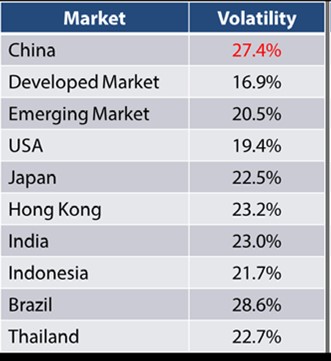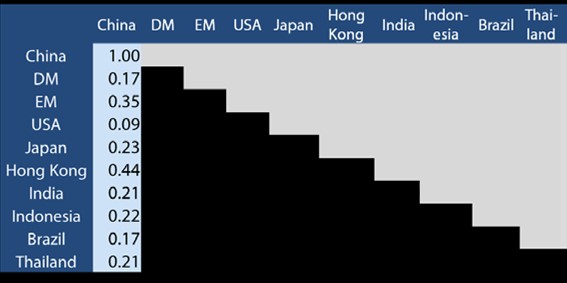Emerging Markets
Nikko AM Asks If China Has Outgrown Emerging Market Class

The Japanese investment house, with more than $220 billion of assets under management, asks to what extent that it still makes sense to regard China as an emerging market nation.
A question raised by China’s rapid economic ascent is to what
extent does it make sense to any longer regard the Asian giant as
an emerging market economy? Should it not be put in the same
bracket as developed countries, or is more progress required –
not least the thorny issue of it being still a Communist-run
country, albeit one operating a corporatist sort of capitalism?
These are important questions for asset allocators seeking to get
their portfolio judgement calls right. There’s also the issue of
working out how much of the rest of the world’s markets, and the
Asian region itself, is a reflection of what is going on in
China, as opposed to the US. The rising protectionism of the US
administration of Donald Trump also casts such debates in a
sharper focus than ever before.
In these comments from Yu-Ming Wang, global head of investment
and chief investment officer, International at Nikko Asset
Management, the issues around China’s emerging market status are
put under the microscope.
Since the term emerging markets (EM) was coined over three
decades ago, almost all the underlying facts about EM as an asset
class have changed. Historically, macro views tended to dominate
EM investing more than for developed markets (DM) for a variety
of reasons: 1) Emerging countries experienced a greater degree of
political and economic instability, 2) they were more dependent
on global trade and US monetary policies in the US dollar reserve
system, 3) trade blocs were more isolated with higher barriers to
entry (1), and 4) EM companies were generally younger with
shorter operating histories.
However, globalisation and the transfer of technology have
elevated many EM companies to world class leadership, with
accounting and operational standards aligned to their DM peers.
Access to capital has also become globalised, as these companies
are traded on both domestic and overseas bourses, and the
technology, infrastructure, and governance supporting their
capital markets has had to keep up with the companies they
service.
Along with globalisation, consumer growth has shifted the balance
of economic power. For example, in 1997, DM accounted for 55 per
cent of global GDP to EM’s 45 per cent (2). In 2017, that ratio
was about 41:59 (3). In five years’ time, the IMF projects that
EM will account for 2/3rds of global GDP. How do you justify
calling the lion’s share of the global economy an emerging asset
class?
Currently, EM countries are as influenced by events in China as
much, if not more, as by those in the US. Thus, to successfully
invest in EM, making the right call on China is as important as
making the right call on the US.
The growing impact of China
The current reality is that China is the largest trading partner
to almost all Asian nations (4). China influences the East Asian
EM bloc via direct trade, the IndoChina and Western Asian bloc
via the Belt and Road Initiative, and the resource-producing EM
blocs via its insatiable demand for basic commodities. China
positions its export policy to focus on EMs because of the
similarities between China and EM countries’ consumption needs
and their common inclination for desirable price points.
This EM focus for China’s exports is well-illustrated by Xiaomi
founder Lei Jun, who has named his corporate strategy the
“encircling strategy” (5): first take over the countryside, to
prepare for the final assault on the cities. Xiaomi, Huawei, and
a number of state owned champions’ biggest export markets are
currently India and Russia, then Latam, as they have set their
sights on further global expansion.
Ultimately, we expect EM economies to show a higher correlation
with China than the US. This coupling effect may eventually show
up in equity returns, too (6).
The question of a separate allocation
In the late eighties, debate centred on whether EM should be
treated as an integral part of a global mandate or a separate
dedicated allocation. The debate touches on the question of index
weight being a backward looking or forward looking representation
of the EM asset class’ economic value creation. We believe the
following set of questions were useful guides to such debate:
Will emerging markets generate a sufficiently large economic
growth premium?
Will the asset class become large enough to justify a dedicated
allocation?
Will economic growth support an equity return premium?
Are the skills required to manage EM equities different from
those used to manage DM equities?
Is the correlation to DM low enough to justify a separate
allocation to EM for diversification reasons?
Over the last three decades, the answers to all those questions
have turned out to be a resounding “Yes”, and an overweight
allocation to EM has proven to be the winner in risk/return (7).
That said, success has brought new challenges. Today, the EM
economic growth premium is widely acknowledged, and EM market
capitalisation continues to rise. But what happens when the bloc
of economies that we call EM no longer appear homogeneous?
We think multi-polarity (to borrow the latest buzzword in
geopolitics these days) may be a better way of looking at global
investing than DM versus EM. There are EM markets such as Korea
and Taiwan which are closely linked to global trade, and then
there are those that are linked to commodities and natural
resources. And then there is China, the elephant in the room.
In a hypothetical full inclusion scenario in which China would
account for over 30% of the EM index, we would further argue that
China deserves its own dedicated allocation. We consider the set
of questions above to be as relevant today for the treatment of
China as they were for the debate of EM long ago. We think that a
forward looking allocation to China will serve investors well
into the future, as we believe the answers to the first three
questions on China are all positive, and offer our perspectives
on questions #4 and #5 as follows:
Question #4: China’s high information intensity
The China A-share market behaves very differently from the more
mature markets of Hong Kong and other developed economies. The
A-share market is dominated by retail investors, and the stock
listings are predominantly small and mid-cap companies, as the
charts below show. One conclusion to be drawn from the behaviour
of an average investor in the A-share market is their high
turnover rate and short investment horizon. This phenomenon,
which had been observed in other Asian countries during their
earlier developmental years, presents an opportunity of “time
arbitrage” for investors with discipline and a longer time
horizon. We believe a fundamental research-driven approach with a
long-term horizon is best suited for China’s high information
intensity market.
The value proposition of investing in emerging enterprises, which
are well entrenched in serving China’s billion consumers and
quickly gaining technological edge, is further explored in our
recent paper “China’s Move from Factory of the World to Silicon
Valley of the East”.
Chart 1: Investor mix of China versus DM

Source: JPX, HKEX, LSE, KRX, TWSE, SSE Statistics.
Note: Data as of 2013 for Korea, 2014 for the UK, and 2016 for the rest. Transaction volume basis except for the US (ownership basis).
Chart 2: Market trading value by market cap

Source: UBS, ‘China A-shares – Get Connected’, May 2018
Question #5: Correlation benefits from the A-share market
The onshore market in China is large and can be quite volatile, but it also moves to its own rhythm, thus exhibiting lower correlation to other markets. For an asset allocator, the proposition of higher return and lower correlation is a necessary ingredient for maximizing the diversification benefit from an emerging asset class to expand on its portfolio’s efficient frontier. China’s volatility and correlation to other markets are detailed in the tables below.
Chart 3: Volatility by market

Source: Bloomberg, Nikko AM, April 2018
Chart 4: Correlation by market

Source: Bloomberg, Nikko AM, April 2018
Looking to the future
Investors everywhere are learning to deal with China. It is big,
it is affecting all aspects of global markets, but it does not
operate according to conventional rules and wisdom developed in a
unipolar world under US leadership. China’s rapid rise from an
emerging market to a developed world power has been difficult to
navigate for all investors. From where we sit, our investment
teams have always considered the rise of Asia and China our base
case.
The question of managing a China allocation as a separate
dedicated mandate or an integral part of a global mandate is
subjective, and dependent on the asset owner’s particular
circumstances. At this early juncture of A-shares’ inception into
global indices, the key question of how, and how much, to
allocate to China should be an active decision not to be
delegated to index makers. Considering the unique profile of the
market and how much China influences the global economy, a
decision about China could be the most important call an investor
can make at this time.
(Parts of this text was presented in a speech at the Pension
Bridge Annual Conference in San Francisco on April 11, 2018.)
Footnotes
1 The global trade-to-GDP ratio rose from roughly 25% in the
1960s to 60% in 2015, according to the World Bank’s World
Development Indicators database.
https://www.weforum.org/agenda/2015/06/has-global-trade-peaked/
2 International Monetary Fund. World Economic Outlook. October 1997.
3 International Monetary Fund. World Economic Outlook. April 2018.
4 Yu-Ming Wang. The Real Trade War. March 2017. http://en.nikkoam.com/articles/2017/03/the-real-trade-war
5 This strategy was credited to Mao Zedong who seized political power in China by encircling cities via their surrounding rural areas, then capturing them. http://www.chinadaily.com.cn/china/2007-07/10/content_6142547.htm
6 International Monetary Fund. Reserve Currency Blocs: A Changing International Monetary System? January 2018.
7 MSCI. Built to Last: Two Decades of Wisdom on Emerging Markets Allocations. October 2012.
